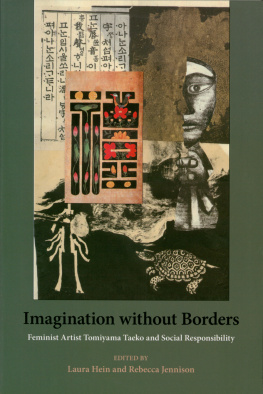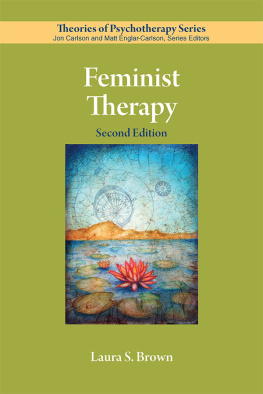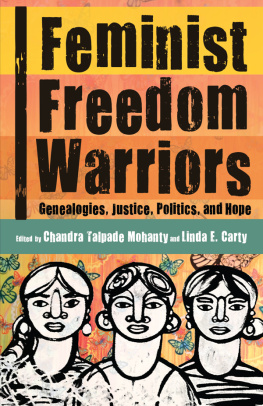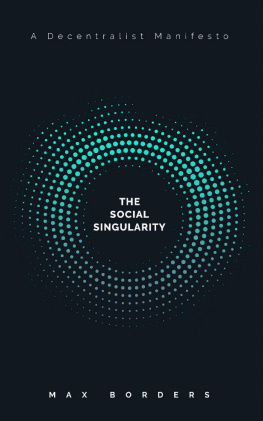Imagination without Borders
Michigan Monograph Series in Japanese Studies
Number 69
Center for Japanese Studies
The University of Michigan
Imagination without Borders:
Feminist Artist Tomiyama Taeko and Social Responsibility
EDITED BY
Laura Hein and Rebecca Jennison
Center for Japanese Studies
The University of Michigan
Ann Arbor 2010
Open access edition funded by the National Endowment for the Humanities/Andrew W. Mellon Foundation Humanities Open Book Program
Copyright 2010 by The Regents of the University of Michigan
Published by the Center for Japanese Studies,
The University of Michigan
1007 E. Huron St.
Ann Arbor, MI 48104-1690
Library of Congress Cataloging in Publication Data
Imagination without borders : feminist artist Tomiyama Taeko and social responsibility / edited by Laura Hein and Rebecca Jennison.
p. cm.(Michigan monograph series in Japanese studies ; no. 69)
Includes bibliographical references and index.
ISBN 978-1-929280-62-9 (cloth : alk. paper)ISBN 978-1-929280-63-6 (pbk. : alk. paper)
1. Tomiyama, Taeko, 1921-Themes, motives. 2. Tomiyama, Taeko, 1921-Criticism and interpretation. 3. ArtMoral and ethical aspectsJapan. I. Tomiyama, Taeko, 1921 II. Hein, Laura Elizabeth. III. Jennison, Rebecca, 1949 IV. Title. V. Series.
N7359.T65I43 2010
709.2dc22
2010026041
This book was set in Minion Pro.
This publication meets the ANSI/NISO Standards for Permanence of Paper for Publications and Documents in Libraries and Archives (Z39.481992).
Printed in the United States of America
ISBN 978-1-92928-062-9 (hardcover)
ISBN 978-1-92928-063-6 (paper)
ISBN 978-0-472-12767-2 (ebook)
ISBN 978-0-472-90162-3 (open access)
The text of this book is licensed under a Creative Commons Attribution-NonCommercial-NoDerivatives 4.0 International License: https://creativecommons.org/licenses/by-nc-nd/4.0/
contents
by Laura Hein
by Ann Sherif
by Rebecca Copeland
by Yuki Miyamoto
by Carlo Forlivesi
Translated by J. Elizabeth Condie-Pugh
Introduced and Translated by Rebecca Jennison
by Hagiwara Hiroko
The images discussed in this book are available in full color on a permanent website hosted by Northwestern University at http://imaginationwithoutborders.northwestern.edu/
The black-and-white images provided here can serve as a convenient source to enhance the textual analysis. It is not possible, however, to fully appreciate the range, let alone the beauty, of the art under discussion in this format. At the same time, based on our experiences exhibiting this work, we believe that the visual experience of the website is more interesting and more meaningful when combined with the contextual explanation offered in this volume. While each is a coherent intellectual project on its own, we recommend using them together.
We have used standard Korean and Chinese transliterations for rendering Korean and Chinese names in English except for the titles of artworks. Most East Asian names are given with the family name first except for people who publish in English and prefer to invert their names to fit Western conventions, such as Yuki Miyamoto.
Many people have contributed to bringing this two-part project to fruition. Both editors began by hosting exhibitions at our universities. Thanks to the help of Kobayashi Masao and Gallery Fleur, a large body of Tomiyama Taekos work was exhibited at Kyoto Seika University (2002). Leonard Swidler of Temple University and Im Ja P. Choi of the Womens Development Institute International showed Remembrance and Reconciliation at the International House in Philadelphia (2004). Ilse Lenz brought the same exhibit to Ruhr University in Bochum, Germany. At Northwestern, the Dittmar Gallery and the University Research Grants Committee provided resources, Dan Zellner and Tom OConnell at Digital Media Services created an image-and-sound DVD that ran on a continuous loop for the exhibit, and Leah Boston and Cora Merriman dedicated a very long weekend of their lives to hanging the art on the walls.
The book, particularly the introductory chapter, was enriched intellectually by advice from Kendall H. Brown, S. Hollis Clayson, Huey Copeland, Rebecca Copeland, Christopher Gerteis, Charles Hayford, Jeff Kingston, Christopher Reed, Mark Selden, and audiences at Leiden University, Northwestern University, Washington University in Saint Louis, and Yale University. Jan Bardsley, Sarah Fraser, and Laura Miller provided both good ideas and good company at various points along the way. The Buffett Center for International and Comparative Studies at Northwestern University bought transcontinental airplane tickets for Eleanor Rubin and Rebecca Jennison. J. Elizabeth Condie-Pugh translated Carlo Forlivesis essay from Italian, Hara Ikuko and Okamoto Atsushi of Iwanami Press contributed to the discussion between Rubin and Tomiyama, while Mori Kazu made Ellys trip to Japan far more enjoyable than it could otherwise have been. Hitomi Tonomura and Bruce Willoughby of the Center for Japanese Studies at The University of Michigan moved the book to publication despite the ever-worsening climate for academic publishing.
As we now appreciate far more than before, building the website was a huge task. Kobayashi Hiromichi of the Tama University Art Museum provided many of the images and has been a crucial creative presence for many years, as did ta Masakuni at Gendai Kikakushitsu Press. The Maruki Gallery for the Hiroshima Panels kindly allowed us to use the images by the Marukis, and Tom Fenton contributed digitized versions of some images. Jan Bardsley, Lonny Carlile, Timothy George, Laura Miller, and Kerry Smith commented on the text. M. Claire Stuart, Sarah McVicar and, we are told, ten other people at the Northwestern University Library provided aesthetic judgment, technical skills, and considerable labor to make the website both beautiful and easy to use. Yumi Terada of Kita Kyushu University added the kanji titles.
Ongoing support for the artists vision and endeavors from Hagiwara Hiroko, Kobayashi Hiromichi, Goto Masako, ta Masakuni, Hanazaki Khei, Kitagawa Furamu, Mut Ichiyo, shima Kaori, Fukuzawa Junko and many others has been invaluable for both projects. Kanzaki Maris untiring attention to the organization and communication of important materials has been an enormous help.
Our deepest gratitude is to the artists Tomiyama Taeko and Takahashi Yji, whose lives and creative work have inspired us in deeply satisfying ways.
LAURA HEIN
Tomiyama Taeko, a contemporary Japanese artist now in her late eighties, deserves attention for the imaginative and powerful ways she has represented remembrance of Japans twentieth century. Her subject for the last quarter-century has been Japans colonial empire, its destructive wars in Asia, and the complicated emotional and social legacies left by both war and empire after 1945. Her work is also about the difficulty of disentangling herself from the priorities of the nation despite her lifelong stance of political dissent. Tomiyamas sophisticated visual commentary on Japans historyand on the global history in which Asia is embeddedprovides a particularly compelling guide through the difficult terrain of modern historical remembrance, all in a distinctively Japanese voice. Attention to her work can provide considerable insight into Japans colonial identity and postcolonial angst; even more impressively, however, Tomiyama moves beyond critique of what is wrong in the world to a richly suggestive visual narrative of the crucial features of a better one.








